Why Most Bodybuilders Swap Brown Rice for White Rice: Nutrition Facts and Performance Insights
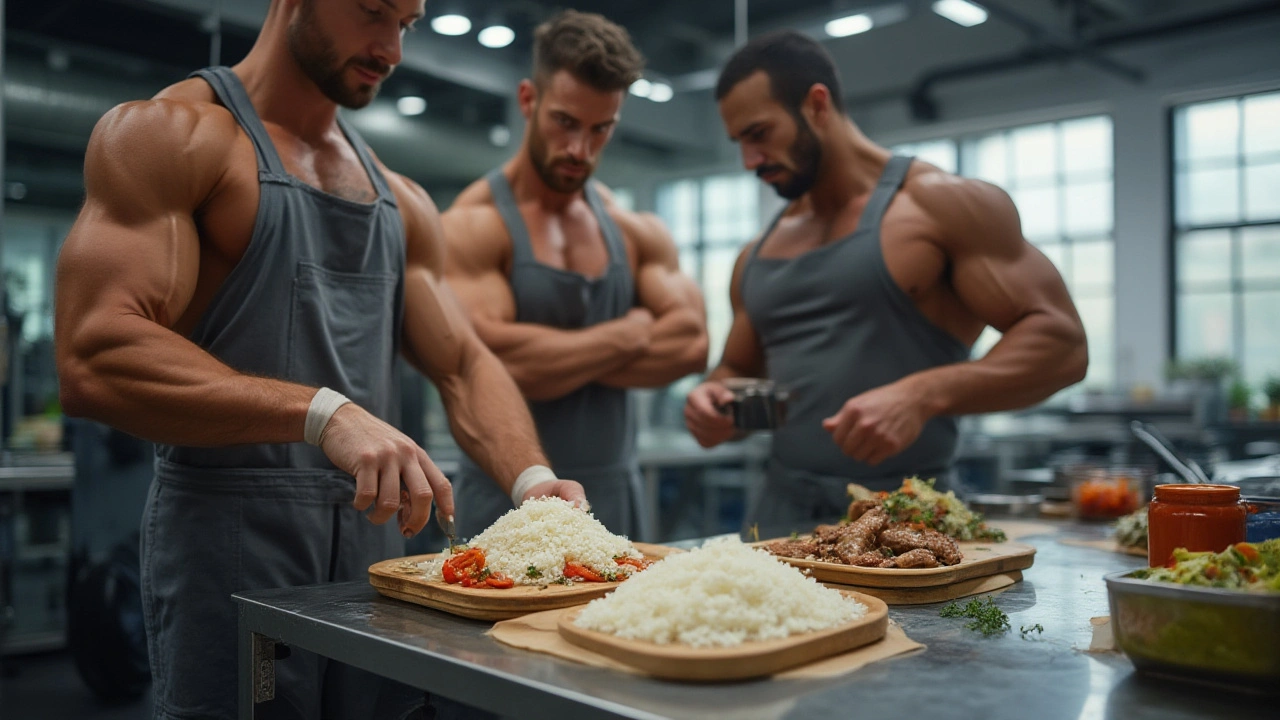
Brown rice sits on supermarket shelves, loaded with that wholesome, virtuous reputation. But peek at a pro bodybuilder’s meal plan: you’ll probably spot white rice front and center, again and again. Isn’t brown rice supposed to be the healthy choice? It’s a little weird, right? Especially when fitness influencers keep telling everyone to “eat clean” and choose whole grains. So why do the biggest, leanest gym-goers often dump brown rice in favor of simple, fluffy white? Well, the answer is way more interesting than “they like the taste.”
The Nutritional Case: Brown Rice vs. White Rice
Let’s clear up the myth that brown rice blows white rice out of the water for nutrition. Yes, brown rice is less processed, so it keeps the bran and germ. That means more fiber, a few extra vitamins, plus a little bump in magnesium and manganese. But let’s look at what really matters to bodybuilders: how much of that stuff does the body actually use? Brown rice brings about 1.8g more fiber and 1g more protein per cooked cup than white rice (bodybuilders usually care a LOT about protein). But when you compare overall macronutrients, both have a similar amount of carbs—roughly 44g per cup. Calories are nearly the same.
What really trips up bodybuilders isn’t the lack of protein, it’s the fiber and “anti-nutrients” in brown rice. That sounds scary, but anti-nutrients are just compounds that make it harder for your body to absorb minerals such as zinc or iron. Bodybuilders eat mountains of food. Extra fiber means feeling full sooner, risking bloating and discomfort, especially during the final weeks before a competition when they need every available gram of fuel. The fiber in brown rice isn’t “bad,” but when you’re shoveling plain rice into Tupperware three times a day, it adds up. White rice, stripped of fiber, is easier to digest, which is a real asset for people who need fast, easy carbs—no surprises, just energy.
Look at the classic bodybuilder diet: chicken and rice, beef and rice, rice cakes after a workout. Let’s face it—if brown rice offered huge advantages, bodybuilders would be all over it. But digestion and comfort are huge. It’s like when Zane (my son) tries to eat three bananas at once—the “healthy” choice isn’t always the smartest when you want to run around afterward. You have to feel good on your food.
How Digestion and Carb Timing Affect Performance
Here’s where biology really swings the argument. Bodybuilders train with intensity that most of us only glimpse in gym reels or the last punishing set before daycare pickup. They need quick energy. Here’s the catch—brown rice digests slower than white rice. That’s great if you want to feel full for hours. It’s not so great if you just burned through your glycogen stores training deadlifts and need to refuel, fast.
The glycemic index (GI) of a food is a measure of how quickly its carbs become sugar in your blood. White rice sits higher than brown rice—so it “spikes” energy faster. For bodybuilders, that fast spike is useful right before or after a workout. They want carbs available now, not three hours later when they’re crashing. For most folks, slow-digesting carbs prevent energy crashes and overeating. But bodybuilders live on strict meal schedules. They usually eat six or more times per day, and each meal is carefully timed with training and recovery. Timing means everything.
There’s also the matter of stomach comfort. Brown rice, with its extra fiber, tends to feel heavier. If you’re eating a massive bowl of rice at each meal, day after day, bloating or stomach cramps can really slow you down. That’s one of the biggest reasons bodybuilders ditch brown in favor of white. It comes down to simple math: easier to digest equals more food and energy, less stomach drama.
If you look at what athletes eat post-competition, you’ll see this trend too. For example, a survey published in the Journal of the International Society of Sports Nutrition found nearly 80% of competitive bodybuilders preferred white rice or even white potato as their main carb, naming digestion and taste as top reasons. This isn’t based on marketing—this comes from years of bulking, cutting, and trying every food combo in the book.
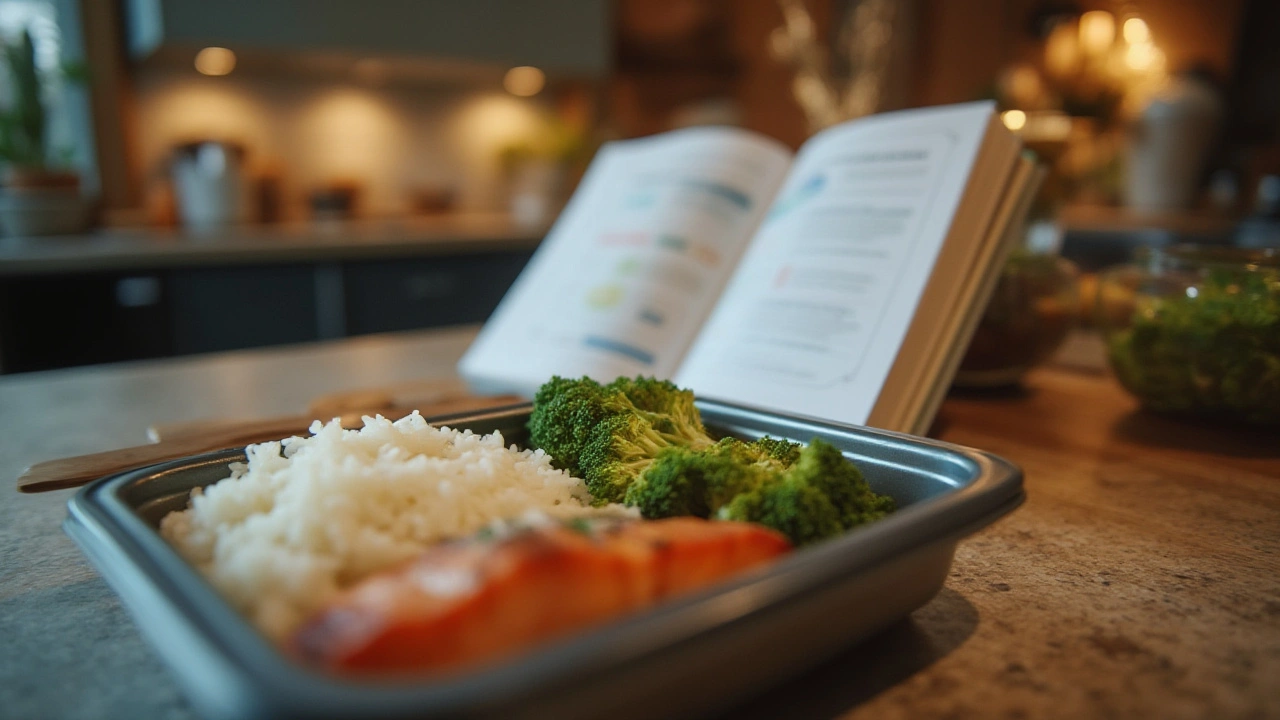
Are There Downsides to Skipping Brown Rice?
If brown rice is more nutritious, does dropping it mean bodybuilders miss out? Not exactly. Brown rice does have extra magnesium and B vitamins, but most serious athletes eat such a huge variety of foods (and usually take a multivitamin) that they don’t risk big deficiencies. They’ll get those nutrients from leafy greens, sweet potatoes, nuts, and shakes. Plus, people forget that brown rice’s nutrition isn’t all easily absorbed—the presence of phytic acid blocks some of those minerals from getting through.
There are people in the fitness world who feel white rice is somehow “empty carbs,” but that’s missing the point of what bodybuilders need. For someone with a desk job, whose main goal is lasting fullness or better heart health, brown rice is great. But if your number-one task is packing in clean calories without stomach stress, white rice is hard to beat.
Let’s not forget food prep, either. White rice cooks faster and stays soft for longer in the fridge or meal prep containers. Brown rice gets sticky or dry—a minor detail that makes a big difference when you batch-cook for the whole week (between kids, work, and gym, nobody wants rice that feels like cardboard for lunch).
Some athletes still fit brown rice in now and then, especially during bulking seasons or off-days. But on hard training or competition phases, it’s almost always sidelined. And interestingly, in Asian countries where rice is the main carb, the vast majority of athletes and bodybuilders still stick to the white variety.
Practical Tips: Choosing the Right Rice for Your Training
If you’re serious about muscle gains, or just want to learn from those who are, here are a few smart strategies. First, know what your body needs. If you train intensely, white rice might be your friend—quick energy, easy to digest, less bloating. If your workouts are lighter or you’re aiming for steady fullness, brown rice could fit better. It all depends on the context.
Want to get more nutrition from brown rice? Try soaking it overnight, then rinsing well before cooking. This reduces some anti-nutrients and makes the minerals in brown rice more accessible. For busy days (or for kids who’d rather not chew forever, like Fern), white rice will save you prep time and hassle. And don’t fall into the trap of thinking carbs are the enemy—especially if you train hard. Your body needs them for energy and mood. Just pick the right ones for your goals.
| Rice Type | Calories (per 1 cup, cooked) | Carbs (g) | Protein (g) | Fiber (g) | Glycemic Index |
|---|---|---|---|---|---|
| White Rice | 205 | 44.5 | 4.2 | 0.6 | 73 |
| Brown Rice | 218 | 45.8 | 5.0 | 2.7 | 50 |
Notice the calories don’t change all that much, but fiber and glycemic index absolutely do. You’ll see “GI 73” for white rice—that’s a quick energy surge. “GI 50” for brown means a much slower burn. Pick what fits your routine, appetite, and schedule.
Also, remember quantity adds up fast. If you’re eating five or six cups a day, even small differences in digestibility hit harder. For someone in a bulking phase, switching from brown to white rice can mean the difference between hitting your calorie goal or battling indigestion all afternoon.
Lastly, test what makes you feel best. Some athletes blend both types. Others stick fiercely to one. There’s no shame in using white rice—even if social media says otherwise. You’re training hard; give your body what supports that effort and keeps you feeling strong—simple as that.

Beyond the Gym: The Bigger Conversation Around “Healthy” Foods
This debate isn’t really about rice. It’s an example of something bigger. We love black-and-white answers in nutrition—one food is “good,” another is “bad.” Reality is messier. What’s best for a bodybuilder looking to carve out muscle is not always what’s ideal for the regular person lowering cholesterol, or a mom like me trying to get Fern to just finish her dinner.
The white rice vs. brown rice debate gives us all a little nudge—question the one-size-fits-all nutrition advice. What works for someone cutting dehydrated chicken and rice out of a Tupperware at the gym won’t fit a six-year-old learning to ride a bike, or someone managing diabetes. Brown rice isn’t a silver bullet, and white rice isn’t the silent villain.
Bodybuilders focus on energy, recovery, and comfort. It’s the nature of that intense sport. The same logic pops up in endurance cycling, Olympic weightlifting, and even ballet training—athletes want what works for high output and fast recovery, not what always ticks the most “healthy” boxes. That doesn’t mean they eat poorly; it just means their priorities are different.
If you see the chicken and rice brigade shoveling down perfectly-metered bowls of white rice, don’t assume they missed the memo on healthy eating. They know exactly why they pick what they pick. It’s a tailored move—a little like swapping out your hiking boots for sandals at the beach. Right tool for the job, every time.

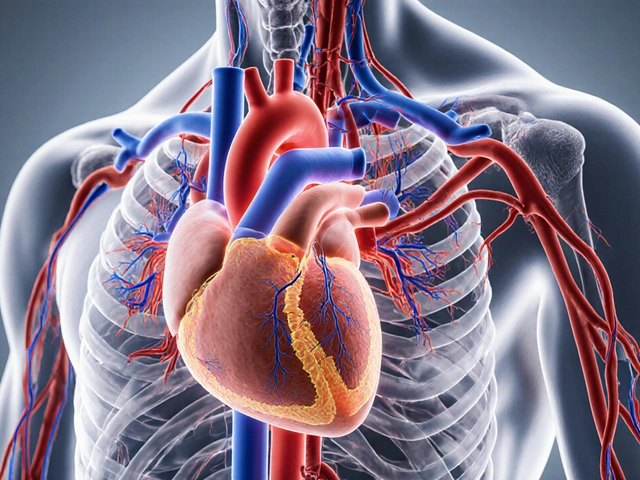
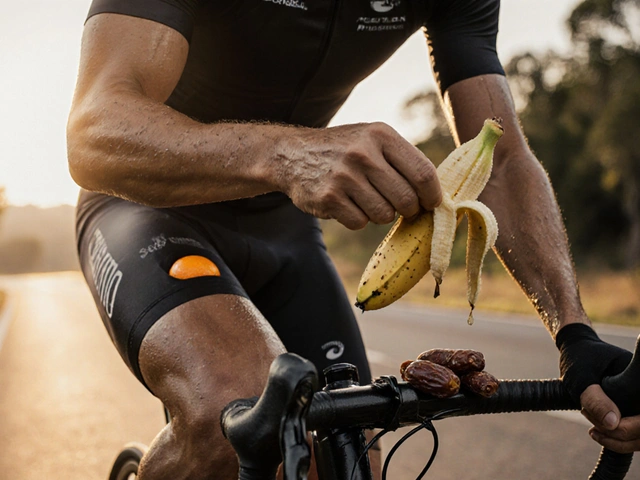
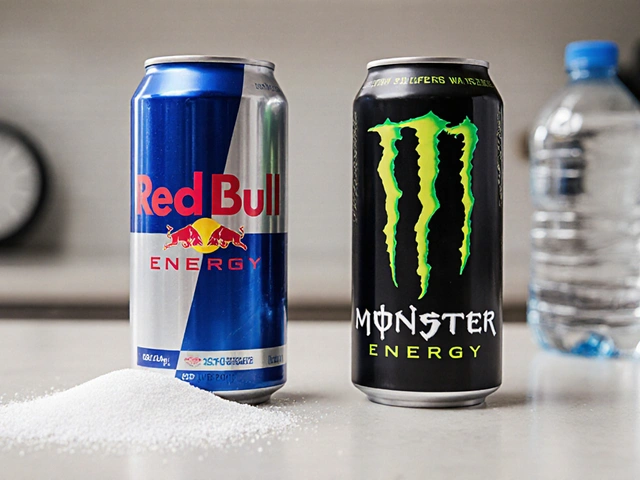
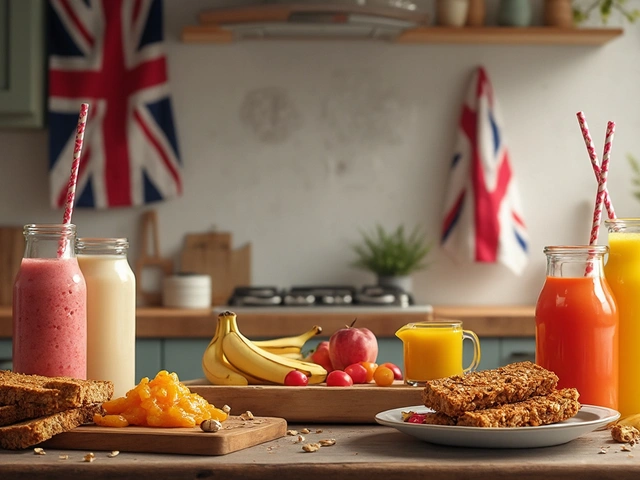
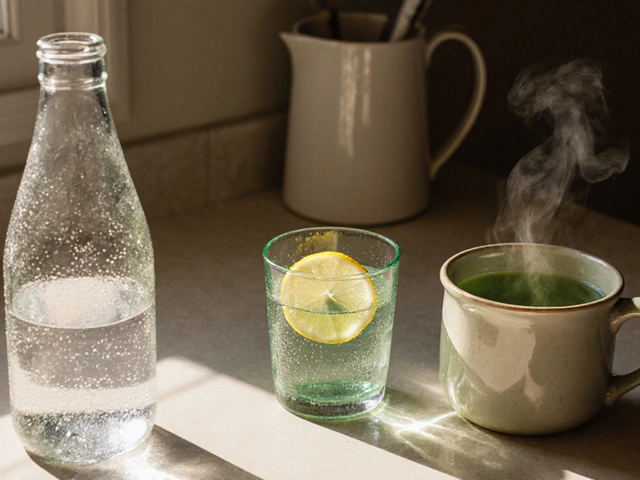
Comments (10)
Liam Hesmondhalgh
18 Jul 2025
First off, can we just acknowledge how sloppy some folks get about rice choice? Brown rice is constantly dismissed like it’s some ancient relic when it’s actually packed with fiber and nutrients.
Bodybuilders apparently choose white rice mainly because it digests faster, providing quick energy for workouts. But that doesn’t mean brown rice is just some no-go zone—it’s about timing and purpose.
You want sustained energy through the day? Brown rice should be your go-to. For pre-workout quick carbs, sure, white rice is fine.
Also, give me a break with the idea that brown rice is harder on digestion. If you soak it right, it’s just fine.
The trend isn’t about better nutrition necessarily, it’s about convenience and what’s easy to digest before hitting the gym. This subtlety seems often overlooked.
Patrick Tiernan
18 Jul 2025
Oh come on, Liam. You really believe it’s only about digestion speed? That's such a surface-level explanation and honestly, kinda pretentious to ignore the full picture.
Look, white rice is often favored because it’s less fibrous and doesn’t cause bloating. That’s crucial when athletes want to avoid any GI distress during intense workouts.
But it’s not just convenience — it’s a strategic choice about glycemic index and how quickly your body can access energy.
Honestly, most nutrition “experts” just parrot studies without accounting for individual differences. There’s no one-size-fits-all, but white rice is the professional choice for many who understand performance.
Brown rice has its place, but don’t act like the bodybuilding community is clueless.
Cynthia Lamont
18 Jul 2025
Honestly, this whole debate just makes me roll my eyes. Like, can we not agree that both types of rice have pros and cons? Bodybuilders skipping brown rice definitely isn’t about one being healthier than the other—there’s a practical reason.
Brown rice is higher in fiber which slows digestion, right? So if you’re gonna swallow a ton pre-workout and want to explode in the gym, white rice makes more sense because it’s easier to digest and spikes energy faster.
But some of these people act like brown rice is poison or something. Completely not true.
Also, let’s remember brown rice contains more micronutrients, which matter if you’re in a caloric deficit and want every nutrient you can get.
I think the point is, it’s all about personalized goals and timing. Don’t just blindly swap one for the other without understanding the full picture.
Kirk Doherty
18 Jul 2025
From a chill perspective, I think both brown and white rice have their place depending on what you’re trying to do.
I usually mix things up—eat brown rice for my regular meals and white rice when I want a quick boost in the gym or post-workout.
Focusing too much on one over the other misses the point. It’s about balancing your macro needs and digestion tolerance.
Also, sometimes I think the hype over white rice is exaggerated just because it fits better with some bodybuilding meal timing protocols.
In the end, maybe don’t stress too hard about it.
Destiny Brumbaugh
18 Jul 2025
Guys I'm from the US and I gotta say, white rice is way more American friendly. It’s just easier to deal with during prep, and let’s be real — when you’re cutting or bulking, you want things simple.
Brown rice is overrated because it adds unnecessary fiber and volume. That’s gonna fill you up faster which is the opposite of what you want when you have strict caloric goals.
Seriously, the bodybuilding community knows what’s up. White rice fuels the gains better without the bulk.
Try it yourself before arguing the semantics of micronutrients. It's simple: faster carbs, faster muscle pumping.
No one’s saying brown rice is bad, just less optimal for certain phases.
Sara Escanciano
18 Jul 2025
This whole thing reeks of misinformation. Brown rice is clearly superior in many ways but bodybuilders ditch it because they want immediate gratification and convenience.
They ignore the fact that white rice causes blood sugar spikes followed by crashes. That surely isn’t ideal for sustained performance or health.
Also, the fiber in brown rice helps digestion and long-term gut health — something people skipping it might regret later.
Please stop romanticizing white rice as the “quick fix” carb. It’s a trap masked as a trend.
Nutrition is about balance, not quick hacks.
Elmer Burgos
19 Jul 2025
I get why people prefer white rice sometimes, really. For me, personally, it depends on what my body needs and when.
After workouts, white rice can replenish glycogen quickly without the digestive lag that fiber-heavy brown rice brings.
But I never cut brown rice out completely—it’s more nutrient dense and keeps blood sugar stable longer.
So for lasting energy during the day, brown rice is unbeatable, but pre/post-workout carbs have a different demand.
It’s all about context and listening to your own body rather than blindly following internet trends.
Jason Townsend
19 Jul 2025
You know, I can’t help but wonder if this white rice trend is pushed by some corporate interests. White rice is processed and often partnered with supplement companies because it’s easily digestible—meaning you buy more products to manage hunger and energy.
Brown rice doesn’t require as much supplementation because it’s richer in nutrients and fiber. Makes you think... why isn’t it marketed better?
Anyway, the quick carb myth is overplayed to benefit profit motives.
Stay woke folks, there’s rarely a simple answer in nutrition.
Antwan Holder
21 Jul 2025
I feel like everyone’s missing the philosophical core of this rice debate. It’s not just about carbs or digestion; it’s about how we define gains in a culture obsessed with instant results.
White rice represents immediacy, a quick spike in energy reflecting impatience. Brown rice demands patience, nurturing long-term health and incremental growth.
We’re puppets of societal pressures biting into quick fixes rather than embracing holistic nourishment.
So the choice between white and brown rice is actually a metaphor for life itself—instant gratification versus enduring cultivation.
Maybe next time you choose your rice, contemplate what it means.
Angelina Jefary
22 Jul 2025
Honestly, the misinformation about rice and bodybuilding performances is rampant. So many people say white rice is better because it’s easy to digest but neglect the importance of stable blood sugar.
Brown rice, for example, because of its fiber content, prevents insulin spikes and crashes.
The way white rice is glorified feels like a ploy to push processed carbs that lead to long term health issues.
I strongly encourage anyone following these 'nutritional trends' to question what you're really being fed and Do Your Research.
Bodybuilding shouldn't mean sacrificing health for short-term performance.